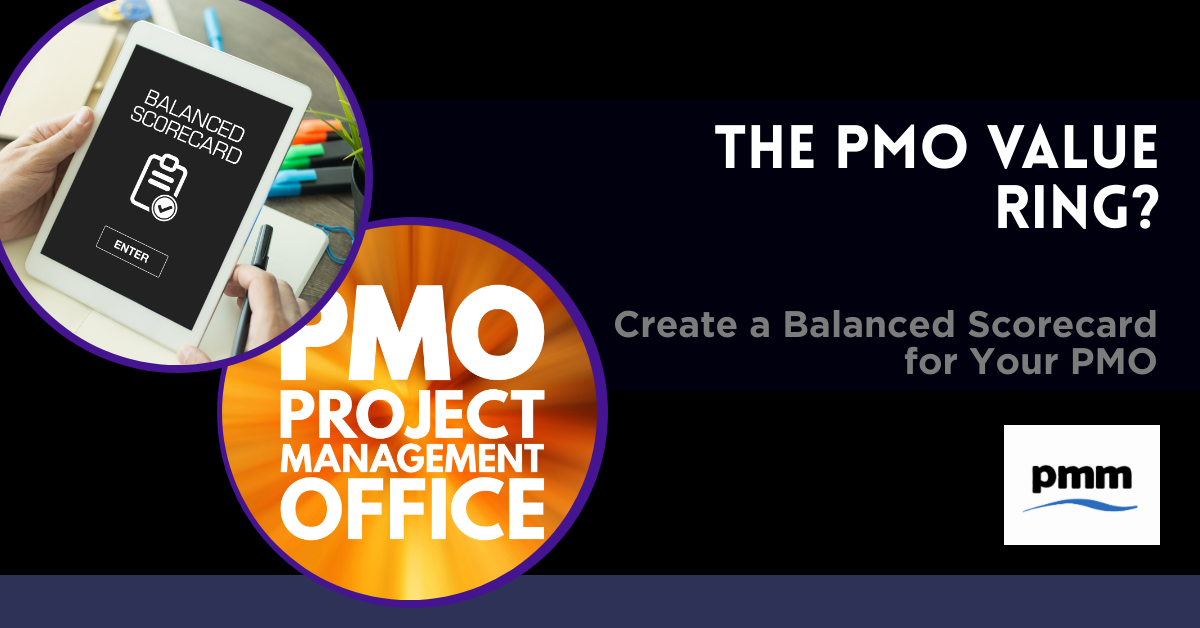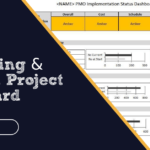Every business unit needs to deliver value, and your project management office (PMO) is no different. One framework you can use to monitor and measure this is the PMO Value Ring, and the final step of the process is to create a balanced scorecard for your PMO.
A balanced scorecard is a way to ensure that your office not only delivers value to the business, but that the value you bring is strategically aligned. Developing one will allow you to monitor the progress of your office against the metrics you lay out.
To develop your balanced scorecard, we’re going to cover:
- How you go about setting your scorecard up
- What your PMO balanced scorecard will look like
- Why you need to develop a balanced scorecard for your PMO
How do I create a balanced scorecard for my PMO?
Throughout the steps of the PMO Value Ring, you’ll have laid out the services your PMO offers, the people you need to complete projects, and how you’re going to measure success with KPIs. The process culminates in you creating an overarching way to confirm the value that your office brings.
First, you need to look at the services your PMO will offer and how you’ve chosen to balance them for the value they bring. You need to make sure that your scorecard takes each one into account – if you’re not going to measure your services, are they adding enough value?
Next, you need to look at the business strategy. Work with your PMO sponsor to understand how they and the wider C-suite expect the PMO to contribute to the business strategy. As long as you’ve had an eye on the business goals during the rest of the Value Ring process, this shouldn’t cause issues.
The KPIs that you have established also need to feed into the balanced scorecard. The data and performance that you measure with your KPIs should directly feed into the results you’re demonstrating to the rest of the business. If you find you’re measuring a bunch of information that doesn’t get reported further up, you should ask yourself if those KPIs are valuable to focus on.
Your balanced scorecard will take into account:
- The financial value your PMO brings to the business
- The value you bring to project clients
- How you bring value to internal processes
- What value do you add in terms of learning and growth within the business
Your balanced scorecard will look at each of these perspectives, plug in the KPIs that relate to each, and have a measurable outcome that can be tracked over time. Agree with your C-suite on how often they want an update on the progress of your balanced scorecard.
Why does my PMO need a balanced scorecard?
As with every other step of the PMO Value Ring, you’re focussed on demonstrating the value your PMO adds to the business. This is a way to justify the investment being made in the people, technology and process you need.
The balanced scorecard allows you to show that your progress with governance and management of projects isn’t insular. You can use your balanced scorecard to link your project results to the wider strategic focus of the business.
You can also monitor the evolution of your PMO. When your office reaches a certain point on the scorecard, this can be a trigger to add a new service or expand the scope of the work you’re doing.
Creating a balanced scorecard for a PMO
A balanced scorecard is a way to monitor your progress over time. Working through the steps of the PMO Value Ring will give you all the insight and data you need to create a scorecard that is relevant to your PMO and the projects you run.






